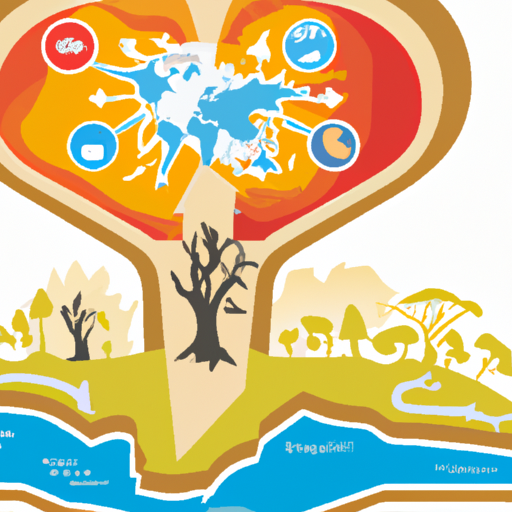 Introduction:
Introduction:
The Earth is currently experiencing an unprecedented wave of extinctions, often referred to as the “Sixth Mass Extinction.” This human-induced crisis is rapidly eroding the planet’s biodiversity, threatening the delicate balance of life that sustains us all. In this article, we aim to provide a comprehensive list of animals facing the imminent threat of extinction, shedding light on the urgency of conservation efforts needed to protect these species.
Mammals:
1. Sumatran Orangutan (Pongo abelii): Deforestation and illegal hunting have significantly impacted the population of this critically endangered great ape species, with an estimated population decline of 80% in the past 75 years.
2. Amur Leopard (Panthera pardus orientalis): As one of the rarest big cats in the world, the Amur Leopard faces habitat loss, poaching, and illegal wildlife trade. With fewer than 100 individuals remaining in the wild, it teeters on the brink of extinction.
3. Sumatran Tiger (Panthera tigris sumatrae): Habitat destruction, poaching, and conflict with humans have pushed the Sumatran Tiger to the critically endangered category, with only around 400 individuals left in the wild.
Birds:
1. California Condor (Gymnogyps californianus): The California Condor is one of the world’s most endangered birds. Habitat loss, poisoning, and lead poisoning from ingesting bullet fragments in carcasses have caused its population to dwindle to approximately 400 individuals.
2. Philippine Eagle (Pithecophaga jefferyi): This majestic bird of prey is endemic to the Philippines and is critically endangered due to habitat destruction, hunting, and illegal logging. Its population is estimated to be fewer than 400 individuals.
3. Kakapo (Strigops habroptilus): The Kakapo, a flightless parrot native to New Zealand, faces several threats, including predation by introduced species, habitat loss, and low genetic diversity. With only around 200 individuals remaining, it is one of the world’s rarest birds.
Reptiles:
1. Hawksbill Sea Turtle (Eretmochelys imbricata): This critically endangered sea turtle species suffers from habitat loss, illegal hunting, and the illegal trade of its highly valuable shell. Its population has declined by over 80% in the past century.
2. Yangtze Giant Softshell Turtle (Rafetus swinhoei): With only four known individuals left in the wild, this critically endangered turtle species is on the verge of extinction. The primary threats include habitat degradation, pollution, and illegal hunting.
3. Gharial (Gavialis gangeticus): The Gharial, a critically endangered crocodilian species found in India and Nepal, has experienced a significant decline in population due to habitat loss, pollution, and accidental entanglement in fishing nets.
Amphibians:
1. Golden Toad (Incilius periglenes): The Golden Toad, once abundant in Costa Rica’s Monteverde Cloud Forest, is now believed to be extinct. Climate change, habitat destruction, and a fungal disease called chytridiomycosis are believed to be the primary causes.
2. Panamanian Golden Frog (Atelopus zeteki): This iconic amphibian, found only in Panama, is critically endangered due to habitat loss, chytridiomycosis, and the illegal pet trade. It is considered a national symbol of Panama’s rich biodiversity.
3. Bornean Flat-headed Frog (Barbourula kalimantanensis): This unique frog, endemic to Borneo, is critically endangered due to habitat destruction caused by logging and mining activities. Its population decline highlights the vulnerability of amphibians to environmental changes.
Invertebrates:
1. Mountain Pygmy-possum (Burramys parvus): This small marsupial, found in the Australian alpine regions, is critically endangered due to habitat loss, climate change, and predation by introduced species. It serves as a vital indicator species for the health of alpine ecosystems.
2. Staghorn Coral (Acropora cervicornis): Climate change, ocean acidification, and pollution have severely impacted coral reefs worldwide, including the critically endangered Staghorn Coral. These coral colonies provide essential habitats for numerous marine species.
3. Giant Panda Ant (Euspinolia militaris): The Giant Panda Ant, endemic to the mountains of China, is critically endangered due to habitat loss, deforestation, and climate change. Its unique appearance and ecological role make its conservation crucial.
Conclusion:
The alarming list of animals on the brink of extinction represents only a fraction of the countless species threatened by human activities. The loss of these animals would not only eliminate unique and irreplaceable biodiversity but also disrupt ecosystems and threaten our own survival. It is imperative that we take immediate action to combat habitat destruction, poaching, climate change, and other factors driving these extinctions. By raising awareness, supporting conservation efforts, and promoting sustainable practices, we can strive to protect and restore the delicate balance of life on our planet.
